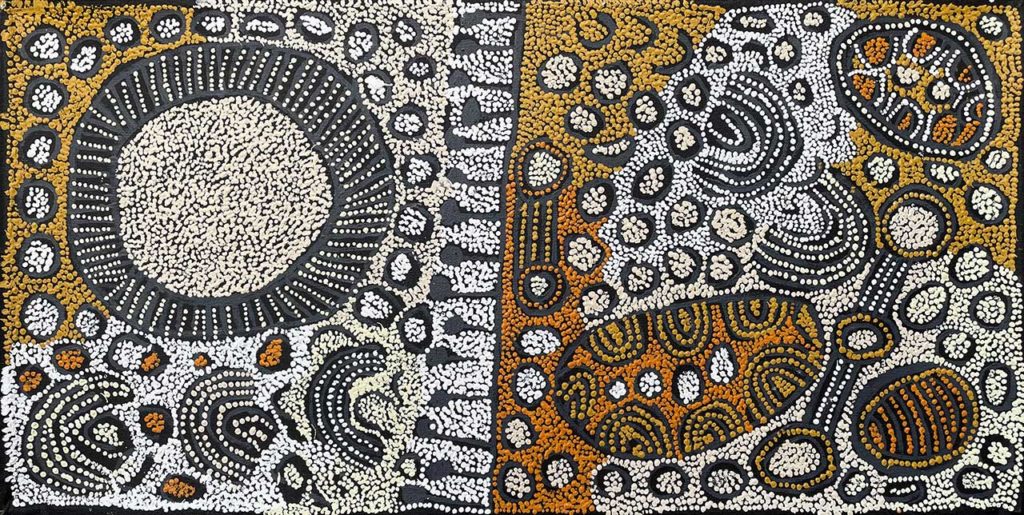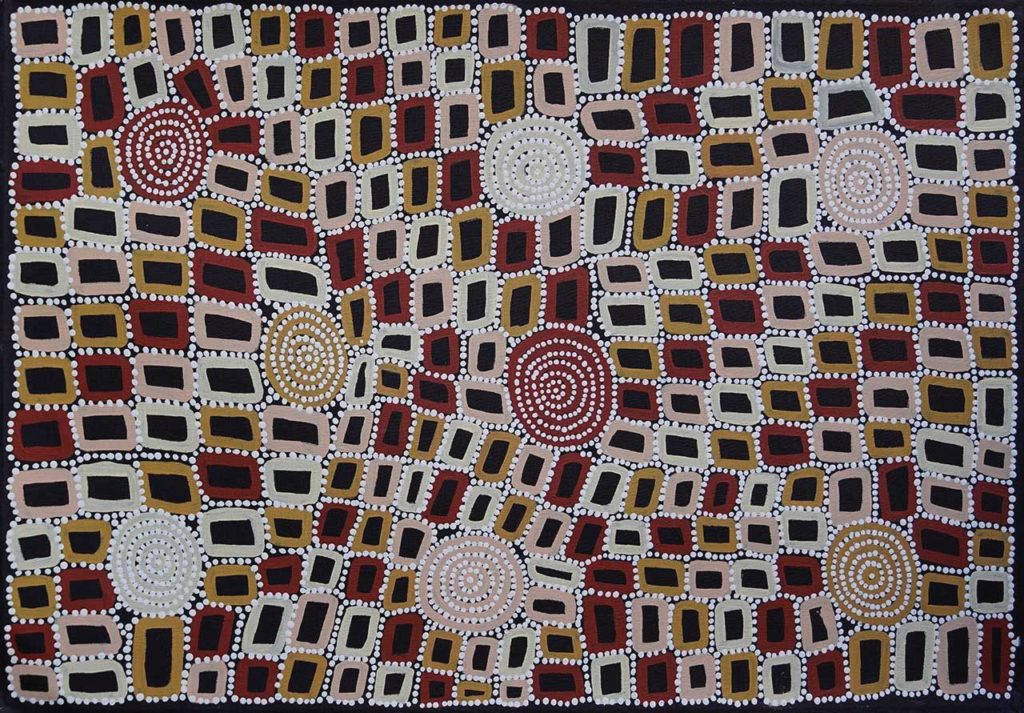Sandhill Country – Exhibition Walk Through
Japingka Director, Ian Plunkett, walks us through some of the highlights of the 2022 exhibition Sandhill Country - Paintings of Inland Australia in Gallery 1 at Japingka.
Indigenous artists have always been famous for being able to visualise themselves in the landscape from an aerial perspective, even though clearly, they didn't have physical flight capabilities back then. Their paintings were intended as maps. To find your way from one water hole to the next or to major sites, or along songlines to find food.
This exhibition features this theme of sandhills. The works are mostly Pintupi paintings. The artists are from the remote region of Lake Mackay on the Northern Territory, West Australian border. We have also included work from artists from the Northern Territory and Western Australia, including works by the local Noongar artists, Yondee Shane Hansen.
This first painting is by George Hairbrush Tjungurrayi. He's a senior Pintupi man, an artist. He's renowned for his artworks because he uses lines more than dots. His paintings have a distinct optical effect. They are instantly recognisable by having that swirling pattern that plays with your eyes and your brain. It can often even produce a strobe-like effect, but they are aerial views of the sandhills shifting with the winds blowing through them.
The sandhills are never fixed because they move over time. These paintings reflect that transition between being in one place and the moving to a new place with the passing of time. They also are part of the Creation story of the Tingari spirits. The Tingari are the main spirits of the Pintupi people who, according to their mythology, created the earth in the Dreamtime and sang this land into existence. The spirits along with the initiated peoples sang particular blocks of land from the void and created the earth. I've been asked how the artist approaches a work like this. These works aren't planned in advance. You won't see pencil marks. I've seen this artist paint and this is exactly as the paint goes down. It's wonderful work.
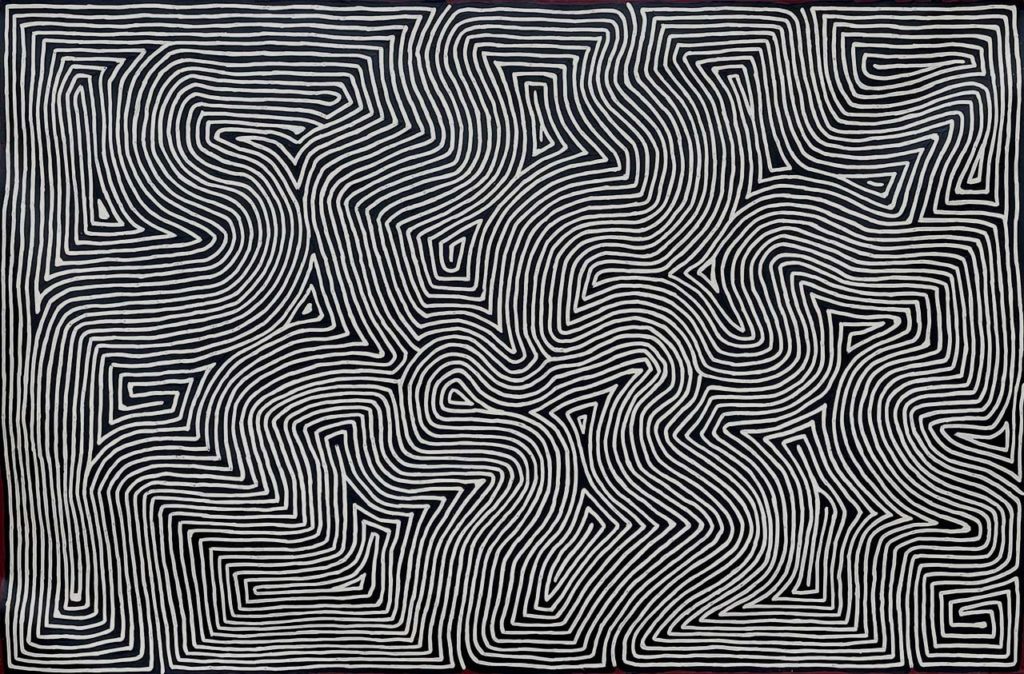
This next painting is quite interesting as a juxta position. This is Yondee Shane Hansen. He's a local Noongar artist. His paintings have a similarity to George Hairbrush's works in that they still have that optical effect. But at the same time, they're very different because what he's painting here is the effect of the winds. He's called it Dancing Winds. These are the winds as we were talking about earlier, moving through and transforming sandhills in the country, through this is now his country. While they have a similarity, they are very different. The works come from very different places and are telling very different stories. It's interesting to see the similarities between the two because they come from people from thousands of kilometres apart and very different language groups and this is how they've approached a very similar story.
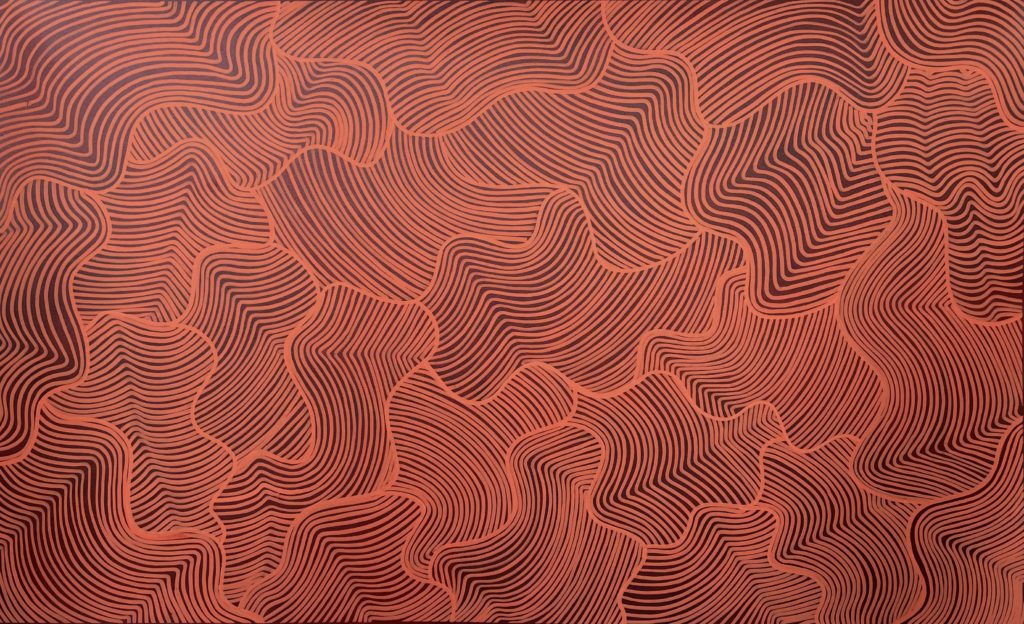
This painting here is one of my favourite artists. This is the late, great Makinti Napanangka, again, a Pintupi from Lake Mackay. She's recognised as one of the greats of the Indigenous fine art movement. She's won the Telstra Indigenous Art Award, the main prize there. She has won a lot of other prizes and you'll find her work in major institutions like the National Gallery and state galleries. Most major collections would have an example of her work. Her paintings are more from a women's perspective. They are the Dreaming story of the two women travelling through country in the early days. She hasn't actually depicted the women, but she's depicted the sandhills through which they travelled. Behind this, is the story of all the adventures and the things that happened to them on their way through and the closeness of these two women.
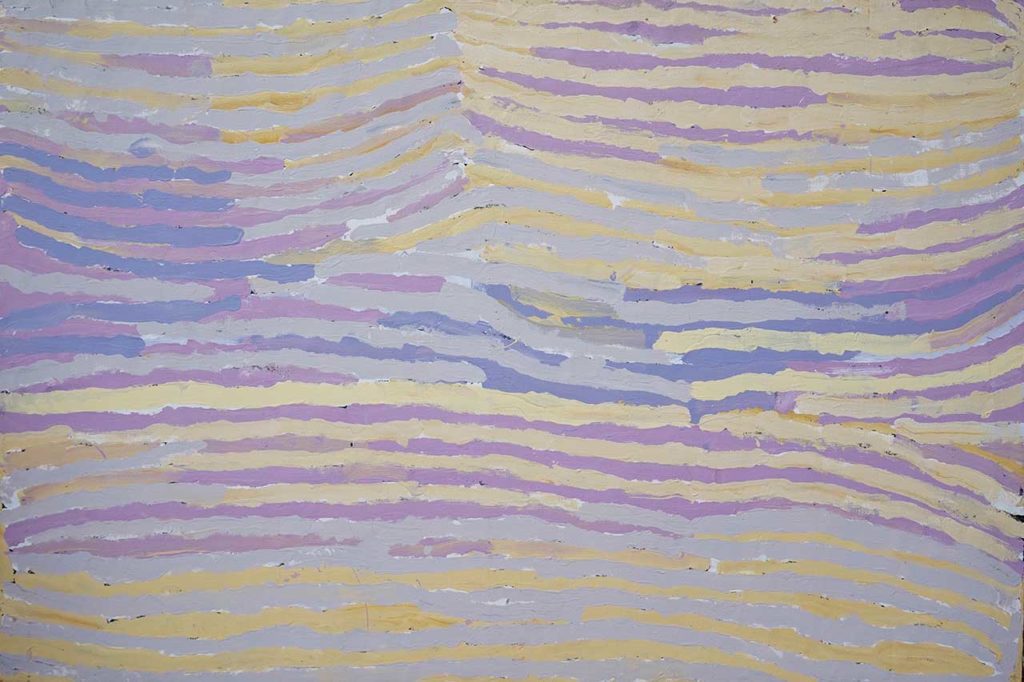
This next painting is by Maureen Hudson Nampijinpa. Again, it's a aerial view of sandhills and it's different again. It has that 3D perspective to it. You could almost see into the distance in this painting. Again, it's the sandhills being blown by the winds, shifting with time and with the strength of the wind. They're never fixed. The landscape changes just as the wind changes in strength every day. Her paintings have that feeling of movement and depth. She's a very highly regarded Warlpiri artist. She's represented major collections. She's just created this effect, just using different coloured dots. You definitely have a deep sense of perspective with this artwork. She's a real talent. I love the work that she's doing.
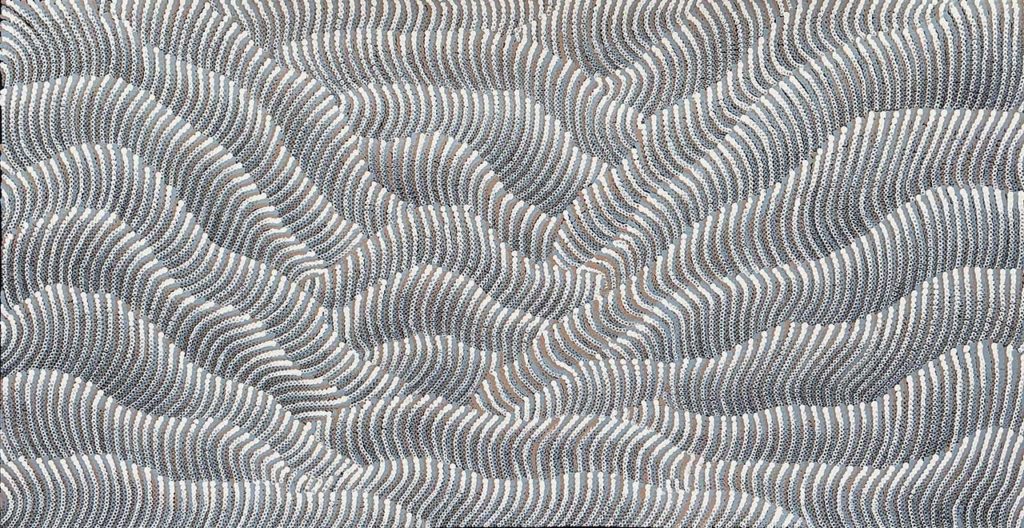
This painting is by Margaret Lewis Napangardi, I've always liked Margaret's work. She's a little bit underrated, I think, for such a major talent, because she often lived in the shadow of her more famous sister, Dorothy Napangardi. But I think she's an equal talent. Her works a lot finer in the dot work than many of the other paintings in this show. Her paintings depict Mina Mina, which is a ancient women's ceremonial site. It's a very important site to the Warlpiri women and major ceremonies take place in this country. I love the way she's used very fine dots and subtle changes in colour to depict changes of topography and the country all around the sacred Mina Mina site. It's a beautiful painting. It's not a large painting, but it has major impact.

These next two paintings are really interesting as well. They are both by Pintupi artists, one male and one female. Yinarupa Nangala is a really well-known artist. Her paintings are instantly recognisable by the topographical aspects of the line that runs through most of her paintings. These little knots coming off are part of the country. She often depicts women on country. These U shapes here are the women in her ancestral country. The paintings are really known for their very subtle changes in palette throughout. She very rarely uses strong colour, but she creates this really distinctive painting that draws you in the more you look at it. I really rate her work very highly.
Next to the painting, we have Walala Tjapaltjarri, a remarkable artist. Again, he's painting the sandhills in the Tingari country. He's a Pintupi man. What is unique about Walala and indeed, his brother, Warlimpirrnga and Thomas Tjapaltjarri, is they were the last group of people to come out of the desert. They are first contact people. It was about 1984 when they came out of the desert and encountered western culture.
We're talking about people who walked out of a nomadic stone age lifestyle right into the 20th century. Walala had never even seen a car. Imagine the culture shock. When he did see a car, he thought it was a moving rock. He had no frame of reference whatsoever. That's a good example of perhaps the clash of cultures these people must have experienced. It is remarkable that he was able to integrate himself into such an alien culture. He'd never seen electricity or taps which had running water. That's also what makes his artwork so special and because it is so pure.
These are the Creation stories, the Tingari. You can actually see the blocks of land that the Tingari have sung into existence. In the background, you've got the black, which is the void where there was nothing before. These are pure Creation stories going back tens of thousands of years that haven't been adulterated by Western culture in any way.
The only nod to Western culture is that the artist is using acrylic paint. But even then, his palette comes from an ochre palette. He's still using a traditional palette. The stories he tells resonate because they do have that unbroken link going back tens of thousands of years. It is wonderful work.
The Sandhill Country - Paintings of Inland Australia runs in Gallery 1 from 3 June - 20 July 2022.
